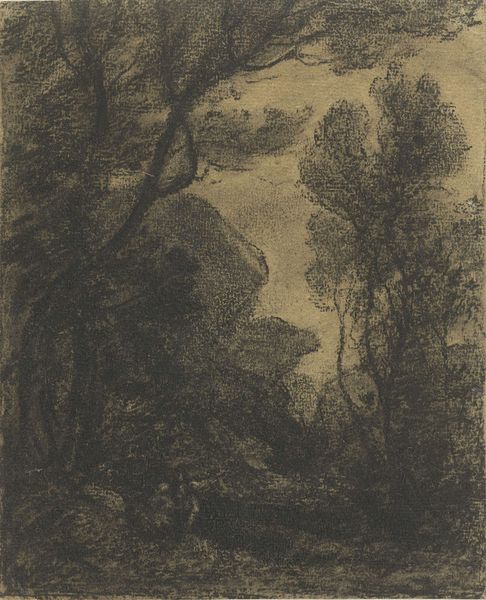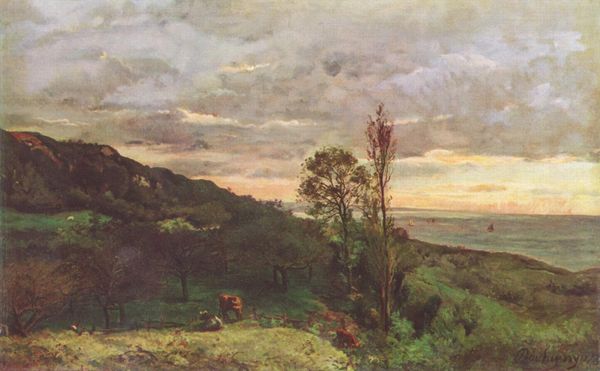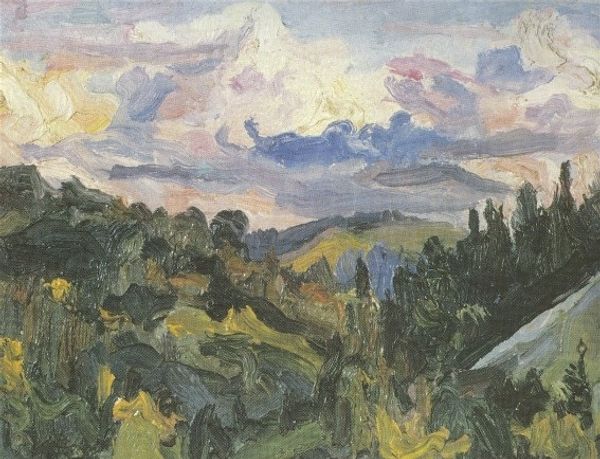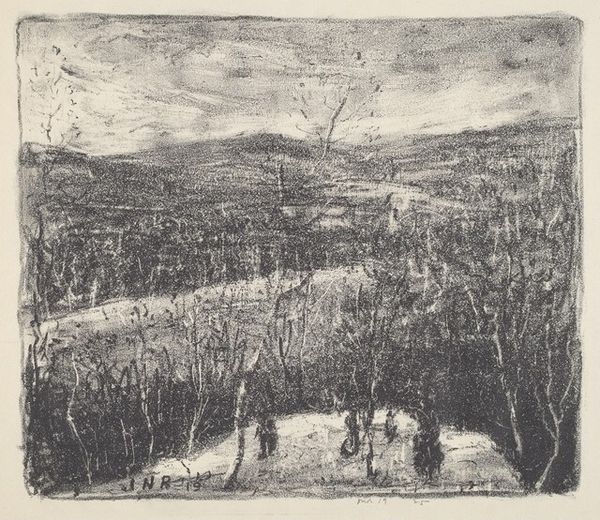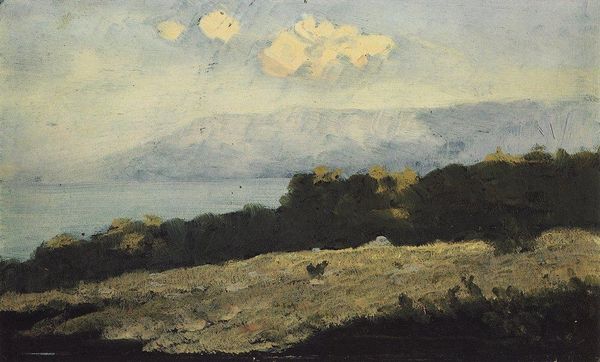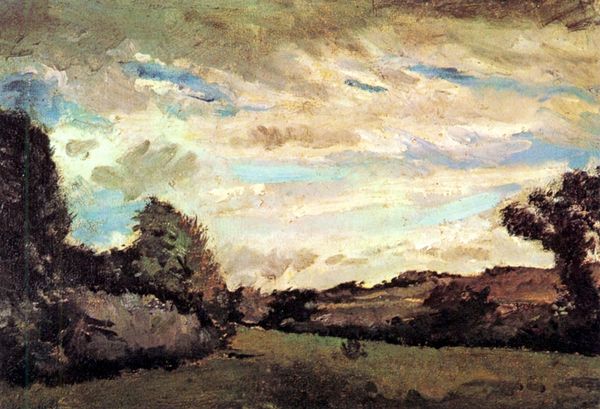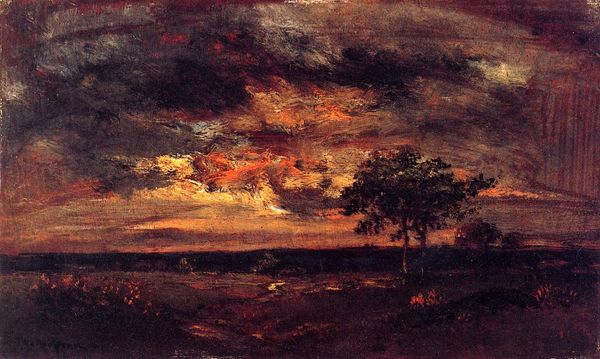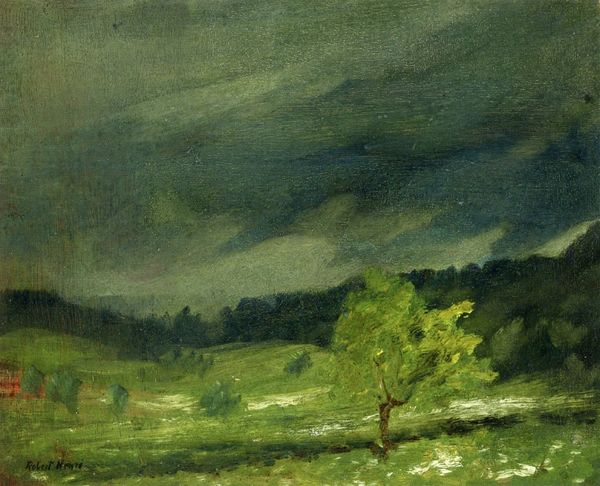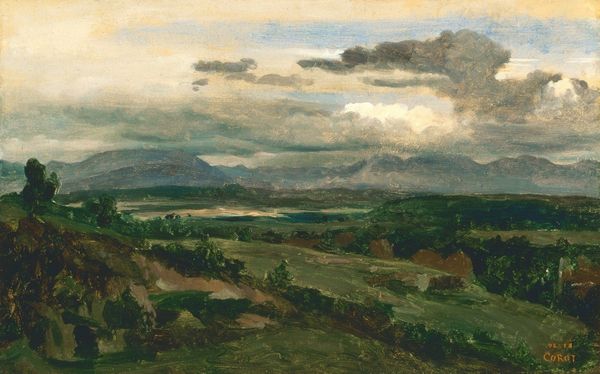
Copyright: Public domain
Editor: This is Paul Cézanne's "River in the Plain," painted around 1868. It’s an oil painting that really captures a moodiness with its dark greens and stormy sky. What do you see in this piece? Curator: I'm drawn to the way Cézanne uses the river itself as a kind of mirror, reflecting not just the sky, but also a sense of inner turmoil, perhaps even a confrontation with nature’s overwhelming power. Think about the historical context. What were some potent symbols or themes recurring in the late 1860's in France? Editor: Maybe the changing social landscape during the transition into Modernism? Curator: Precisely. And consider the density of the trees—almost a visual barrier, loaded with hidden meaning and hinting at secrets. What emotional weight do those dense trees evoke for you? Editor: A sense of mystery or foreboding? Something unknown beyond that thick foliage. Curator: Exactly! They could symbolize obstacles or the unconscious mind. How do you see that connection to the collective memory being expressed here? Editor: It’s like Cézanne is tapping into this primal understanding of landscapes. Not just nature, but nature as a representation of internal, and societal, struggles. It gives new depth to "River in the Plain," it is beyond just a nice scenery. Curator: Absolutely. Looking at art through this lens gives works entirely new life.
Comments
No comments
Be the first to comment and join the conversation on the ultimate creative platform.

